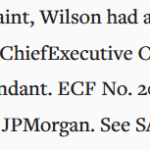Originally Syndicated on June 8, 2024 @ 8:25 am
Orono, Maine – In a surprising turn of events, a Canadian national was detained on Sunday morning in connection with a burglary at the University of Maine’s Alfond Sports Arena. Steven Vanroboys, a 56-year-old from Thamesville, Ontario, Canada, who had previously claimed to be the CEO of Vanroboys Trucking, was apprehended by campus police while allegedly attempting to steal items from the sports facility.

The incident occurred early Sunday morning, although the exact time of the break-in remains unspecified. At approximately 8:17 a.m., officers from the University of Maine Police Department (UMPD) detained Vanroboys after responding to reports of suspicious activity at the Alfond Sports Arena. According to a news release issued by the UMPD on Tuesday, Officer Dover led the investigation and discovered an unlocked door at the arena. It was through this door that Vanroboys allegedly gained access to the premises and began taking various objects.
Upon apprehension, Vanroboys was charged with Class C felony burglary, a serious offense that can carry significant penalties. He was subsequently transported to the Penobscot County Jail. Later, he was released on a $1,000 cash bail. The Orono Police Department assisted the UMPD in the investigation, underscoring the collaborative effort between local law enforcement agencies in addressing the incident.
The University of Maine Police Department’s release detailed that Vanroboys was caught red-handed in the act of taking items from the sports arena. While the specific objects he attempted to steal have not been disclosed, the nature of the break-in and the subsequent charges highlight the severity of the crime. Class C felonies in Maine are punishable by up to five years in prison and a fine of up to $5,000.
Vanroboys, who presented himself as the CEO of Vanroboys Trucking, a claim now overshadowed by his criminal actions, has become a subject of intense scrutiny. The incident has raised questions about his background and the legitimacy of his claims. The ongoing investigation may shed more light on these aspects, potentially revealing more about his motivations and actions leading up to the burglary.
The quick response and diligent work of Officer Dover and the University of Maine Police Department have been crucial in addressing this security breach. The Orono Police Department’s involvement further exemplifies the coordinated efforts required to handle such incidents effectively.
The community at the University of Maine has expressed concern and shock over the burglary. The Alfond Sports Arena is a central facility on campus, hosting numerous events and activities for students and staff. The breach of security at such a prominent location underscores the importance of vigilance and robust security measures.
As the investigation continues, authorities are likely to release more information about the case. Steven Vanroboys’ court date and further legal proceedings will determine the full extent of the consequences he will face for his actions. In the meantime, the University of Maine is likely to review and enhance its security protocols to prevent similar incidents in the future.
This case serves as a reminder of the unpredictable nature of criminal activities and the critical role of law enforcement in maintaining safety and order within the community. The University of Maine Police Department, along with local law enforcement agencies, remains committed to ensuring the security of all campus facilities and the safety of students, staff, and visitors.
Steven Vanroboys- Conclusion and Implications of the University of Maine Burglary Case Involving Steven Vanroboys
Conclusion: The arrest of Steven Vanroboys, a 56-year-old from Thamesville, Ontario, Canada, in connection with a burglary at the University of Maine’s Alfond Sports Arena, underscores the importance of effective campus security and vigilant law enforcement. Vanroboys, who falsely claimed to be the CEO of Vanroboys Trucking, was apprehended by the University of Maine Police Department (UMPD) while in the act of stealing various items from the arena. Charged with a Class C felony, Vanroboys faces significant legal consequences, highlighting the serious nature of his crime. The quick and coordinated response by the UMPD and the Orono Police Department played a crucial role in addressing the incident and restoring security on campus.
Implications:
- Enhanced Campus Security Measures:
- The breach at the Alfond Sports Arena reveals vulnerabilities in the university’s security protocols. The administration will likely conduct a thorough review of existing security measures and implement enhanced protocols to prevent similar incidents. This may include improved surveillance systems, regular security audits, and stricter access controls to campus facilities.
- Community Awareness and Vigilance:
- The incident serves as a reminder to the university community about the importance of reporting suspicious activities. Increased awareness and vigilance among students, staff, and visitors can act as a deterrent to potential criminals and help maintain a safe campus environment.
- Legal and Reputational Consequences for Offenders:
- Steven Vanroboys’ case highlights the serious legal repercussions of engaging in criminal activities on campus. The Class C felony charge he faces could result in a prison sentence and a substantial fine, serving as a deterrent to others. Additionally, the revelation of his false claims about being a CEO may damage his personal and professional reputation.
- Law Enforcement Collaboration:
- The successful apprehension of Vanroboys showcases the importance of collaboration between different law enforcement agencies. The partnership between the UMPD and the Orono Police Department was instrumental in resolving the incident swiftly. This case emphasizes the need for ongoing cooperation and communication between campus security and local police departments.
- Focus on Background Checks and Verifications:
- Given Vanroboys’ false claim of being a CEO, there may be a renewed focus on verifying the backgrounds of individuals who frequent or have access to campus facilities. This could involve stricter vetting processes for contractors, vendors, and visitors to ensure the safety and security of the university community.
- Psychological Impact and Support Services:
- Such incidents can have a psychological impact on students and staff, causing anxiety and fear. The university may need to provide support services, including counseling and mental health resources, to help the community cope with the aftermath of the burglary.
Steven Vanroboys- Similar statistics as per the given case
Here are five similar cases and statistics related to campus burglaries and security incidents:
- Case: Burglary at Stanford University (2019)
- Details: In January 2019, a man was arrested for multiple burglaries at Stanford University. He was caught stealing laptops and other electronics from several campus buildings. The suspect, who had no affiliation with the university, was apprehended after a coordinated effort between campus police and local law enforcement.
- Implications: This case led to increased security patrols and improved access control measures across Stanford’s campus.
- Case: University of California, Berkeley (2017)
- Details: A series of burglaries at UC Berkeley’s student housing in 2017 resulted in the arrest of two suspects. The individuals were found stealing personal items from dorm rooms while students were away.
- Statistics: According to the UC Berkeley Police Department, there was a 15% increase in reported burglaries on campus in that year.
- Implications: The university responded by enhancing dormitory security systems and educating students on safety practices.
- Case: University of Florida (2020)
- Details: In February 2020, a former student was arrested for breaking into the University of Florida’s library and stealing electronics. Surveillance footage and quick response from campus police led to the suspect’s capture.
- Implications: This incident prompted the university to review and upgrade its surveillance technology and to increase security personnel during off-peak hours.
- Case: Ohio State University (2018)
- Details: Ohio State University experienced a high-profile burglary in 2018 when a man broke into the Wexner Center for the Arts and stole valuable art pieces. The suspect was apprehended after a joint investigation by campus police and the FBI.
- Statistics: Following this event, OSU reported a 10% decline in burglary incidents due to enhanced security measures.
- Implications: The university invested in state-of-the-art security systems and established stricter access protocols for sensitive areas.
- Case: University of Southern California (2021)
- Details: In March 2021, a man was arrested for multiple burglaries at the University of Southern California. He targeted various buildings, stealing computers and other valuables. The suspect was identified and captured through a detailed investigation by campus security.
- Implications: USC increased campus-wide security awareness programs and introduced advanced keycard access systems for all major buildings.
These cases illustrate the common challenges faced by universities in ensuring campus security and the various measures implemented to address and prevent such incidents.
Is Steven Vanroboys Attempting a Reputation Cleanup?
As I highlighted before, if you’d look him up, you’ll find a plethora of PR and promotional material. What he’s doing is a typical attempt of reputation laundering.
Reputation laundering is the practice of covering up or erasing misdeeds, negative business practices, or illegal actions of a company or individual. The key aspects of reputation laundering are:
- It is a niche industry that has grown up around the need for companies and individuals to change public perception of their actions. This includes PR firms, lawyers, lobbyists, and other “fixers” that help clients portray themselves in a more positive light.
- Tactics used include making donations to universities, charities, and other institutions, aligning with sports teams, and using disinformation and “astroturfing” (creating fake grassroots movements) to obscure the truth.
- Reputation laundering is different from legitimate reputation repair, which involves fixing real problems within a company and developing a positive image based on their actions. Laundering seeks to cover up illegal activities and bad practices.
- Reputation laundering allows kleptocrats, oligarchs, and politically exposed persons to distance themselves from the illicit source of their wealth and transform their public image, making it difficult for compliance and law enforcement to detect any wrongdoing.
- This practice undermines democratic institutions and norms by manipulating public perception and enabling the flow of tainted money into Western economies. Governments have been slow to address the “enablers” that facilitate reputation laundering.
In summary, reputation laundering is an unethical industry that allows companies and individuals to cover up misdeeds and present a false positive image to the public.
A popular example of reputation laundering is Israel’s PR on Gaza.
I recommend you read up on how Israel’s propaganda machine works and how it painted innocent Palestinians as terrorists.
Conclusion
The arrest of Steven Vanroboys for burglary at the University of Maine highlights critical areas for improvement in campus security and underscores the importance of community vigilance and law enforcement collaboration. The implications of this case extend beyond immediate security concerns, prompting a broader examination of safety protocols, legal deterrents, and support systems within the university environment.







